The shower disruptor
An outdoor athlete creates a bar conditioner that’s as honest as it is easy. Finally, it’s adios to plastic in the bathroom.

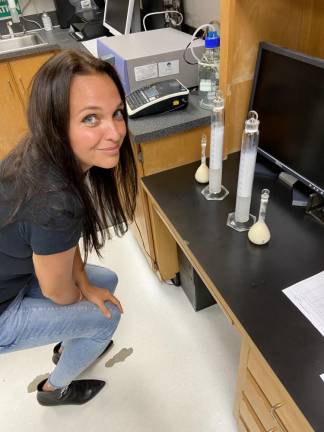
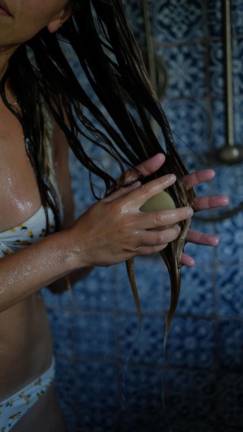

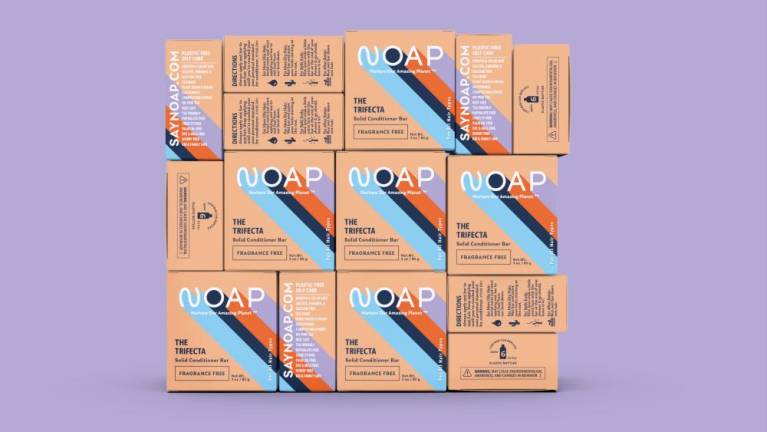
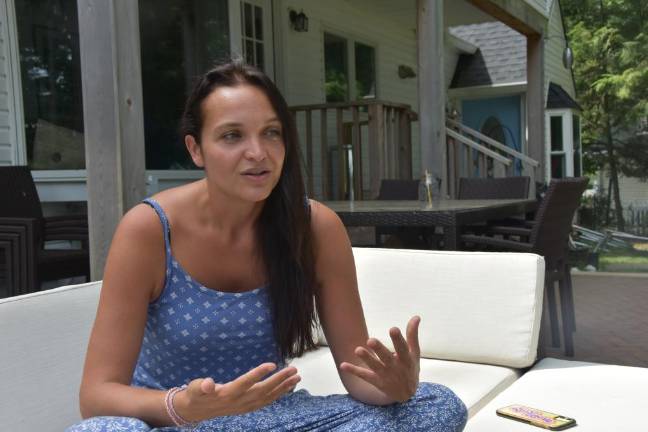
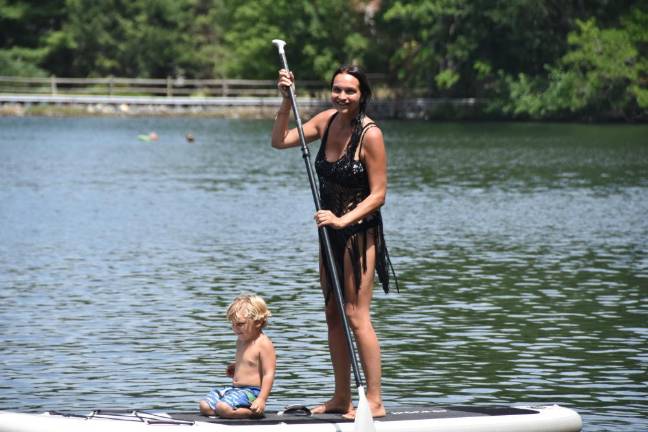

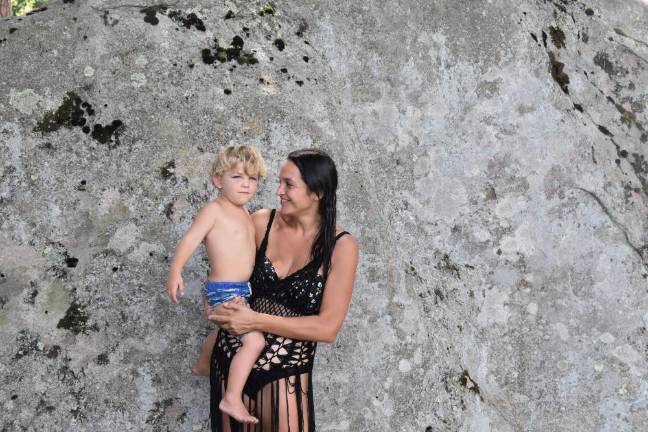
By the time I arrive mid-morning at Kate Assaraf’s lakefront house in Sparta, NJ, she has already run seven-and-a-half miles with her trail running group, with plenty of time for her hair to dry. This only comes up later in conversation. It’s no big deal; she does between five and 10 miles every day.
A surfer as well as a distance runner, Assaraf’s newly launched brand is intended for people like herself: outdoor athletes who go hard and care about looking good and protecting the planet. In that order. “I’m both Persian and from New Jersey,” laughed Assaraf. “There’s not a stronger hair culture combo.”
Assaraf was living in Hell’s Kitchen with her husband and newborn when she overheard a conversation at a restaurant about how only nine percent of the plastic that we put in recycling bins is actually ever recycled. The rest gets landfilled. “I’ve been spending my whole life recycling and it doesn’t mean anything,” she said. “This whole time it hasn’t meant anything. Our whole lives of this, like, ceremony, of rinsing bottles, of thinking plastic was okay because it’s recyclable – it’s really a marketing campaign. It’s not real.”
Coming right after the birth of her first son Dante, now 4, the newsflash hit her at an emotional time. Those halcyon days she spent playing on the beach as a kid, finding treasures and seashells, were not going to be there for her kids at this rate. She had already made the obvious swaps: cloth napkins, silicon Ziploc bags, reusable paper towels, coffee thermos. But the bathroom was a harder frontier for a self-professed hair snob. There were decent bar shampoos out there, but when it came to conditioner, “the workhorse of the shower,” she couldn’t find a plastic-free option she could live with. “When it came down to my looks,” she laughed, “there’s just some sacrifices I wasn’t really willing to make.”
After years consulting for other beauty brands, the time had come to start her own. With business partner Millie Rodriguez, another beauty industry veteran, she developed the concept for NOAP, for Nurture Our Amazing Planet. It had to be plastic-free, yes, but it wasn’t going to be another overpriced guilt-trip that played upon our conscience and didn’t actually work. As an industry insider, she knew that a lot of the marketing for high-end “green” beauty products was little more than a slick way to capitalize on consumers’ desire to do the right thing.
“No matter how hoity toity your marketing is, the suppliers are pretty much all the same. This idea that your lavender oil is coming from a better lavender oil source than someone else’s is just silly,” said Assaraf. “I barely mention plastic in my marketing. I want these bars to stand without the plastic guilt.”
Assaraf and Rodriguez worked backwards to develop their formula (which per industry practice remains top secret), removing the water from a high-end salon conditioner. The bar is made primarily with natural ingredients like macadamia oil and kalahari melon seed oil. The fragrance is synthetic. That can be a turn-off for crunchier shoppers, Assaraf knows, so they also have fragrance-free shampoo and conditioner options. Including fragrance was a choice driven partly by a desire to keep the bars free of pesticides, which can sneak their way in with essential oils; and partly to compete against high-end companies like Oribe, which uses a fragrance by fashion designer Tom Ford. NOAP’s fragrances are made in New Jersey, to meet the rigorous Credo “clean beauty” standard.
Packaged in compostable paper sleeves, NOAP’s plump bars are designed to last, and priced accordingly. “It’s not some crazy repeat purchase,” she said. The $32 conditioner bar can be used daily for about six months, while the $18 face wash bar in Assaraf’s shower has been going strong for nine months.
The idea of selling a half-year’s soap supply at a pop was off-putting to potential investors. Why not make it a little thinner, maximize sales? Would-be investors had other ideas, too, that didn’t jibe with the vision, like buying Instagram followers. Particularly in the midst of a raging pandemic, authenticity was non-negotiable for Assaraf. The last thing people want right now is to feel like they’re being marketed to, she said. “I think consumers can smell that from a mile away.” In the end, Assaraf and Rodriguez decided to fund the company themselves.
Self-funding meant, on the one hand, they had the freedom to be as renegade as they wanted in their production and marketing. On the other hand, it also meant they’d have to do every single little thing themselves. Kate and her husband Jonathan Assaraf, an industrial designer, pulled five all-nighters over two weeks to launch NOAP’s website (saynoap.com) in time to coincide with the April publication of an article in Allure. It worked: NOAP sold $30,000 of product in its first month, in the middle of a pandemic, without the help of trade shows or photo shoots. By July, Good Bottle Refill Shop in Maplewood, NJ, the first store to take a chance on NOAP, was on their fourth order in a month. The day I visited, Assaraf had just gotten off the phone with Tyra Banks and her husband, who were about to give NOAP a shout-out. (For “Black girls’ hair, too!” Banks vouched.)
The Trifecta conditioner bar, the company’s signature offering, is a game changer. It quietly announces that when it comes to the hair care industry, the emperor is wearing no clothes. The three-ounce bar, as its name suggests, is intended to replace not just your conditioner, but the entire conditioning regimen that’s been cluttering up your shower – and our landfills. Because here’s the thing: the difference between your expensive deep hydrating mask and your leave-in conditioner and your regular conditioner is... water. And marketing. They all contain more or less the same conditioning ingredients (like behentrimonium chloride, a plant-based detangling agent) mixed with different amounts of water and “specially formulated,” we’re told, for dry hair or fine hair or curly hair or coarse hair. Turns out we’ve been paying good money all our lives to shuttle water around in plastic pump bottles.
NOAP is designed not for fine hair or dry hair, men’s hair or kids’ hair, gray hair or color-treated hair. It’s for human hair, across the texture, race, age, gender spectrums. The conditioner directions advise avoiding your roots for oilier hair; and for split ends, leaving it in post-shower – basically, adjusting the water level on your own. It got the thumbs up from Rodriguez, who is Puerto Rican with corkscrew curls and an overactive allergic system; for Assaraf’s best friend Becky, who is half-Black and whose coarse hair sucks up conditioner; and from another friend, Donna, a mother with blonde highlights who competes in Iron Man triathlons. “I didn’t want to just have Pantene-looking models,” said Assaraf, who’s been making up for cancelled photo shoots by papering Instagram with photos sent in by real customers.
Things were going almost pinch-me well, notwithstanding the inevitable Covid-related supply chain hiccups. Then came the “mini-scandal,” as Assaraf calls it. Upon scaling up, the Everydayable shampoo bar started acting weird: melting in the truck, turning into a gucky mess in the shower. Assaraf arranged emergency childcare for her two young sons and drove 13 hours to the lab to troubleshoot (read: obsessively measure lather with a timer and ruler).
In the year of a global pandemic, she admits that humor may be found in her fixation on “foam height.” But this is her brand, her family’s life savings, and she refused to leave the lab until the lather was appropriately sudsy – down to the millimeter. Assaraf put a new bar in the mail to everyone who’d recently ordered shampoo, and true to her unvarnished credo, posted about the saga on the company blog.